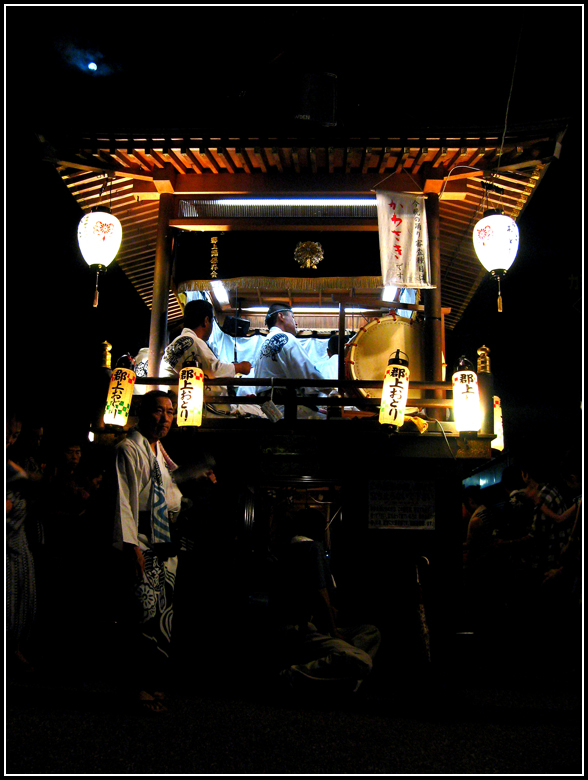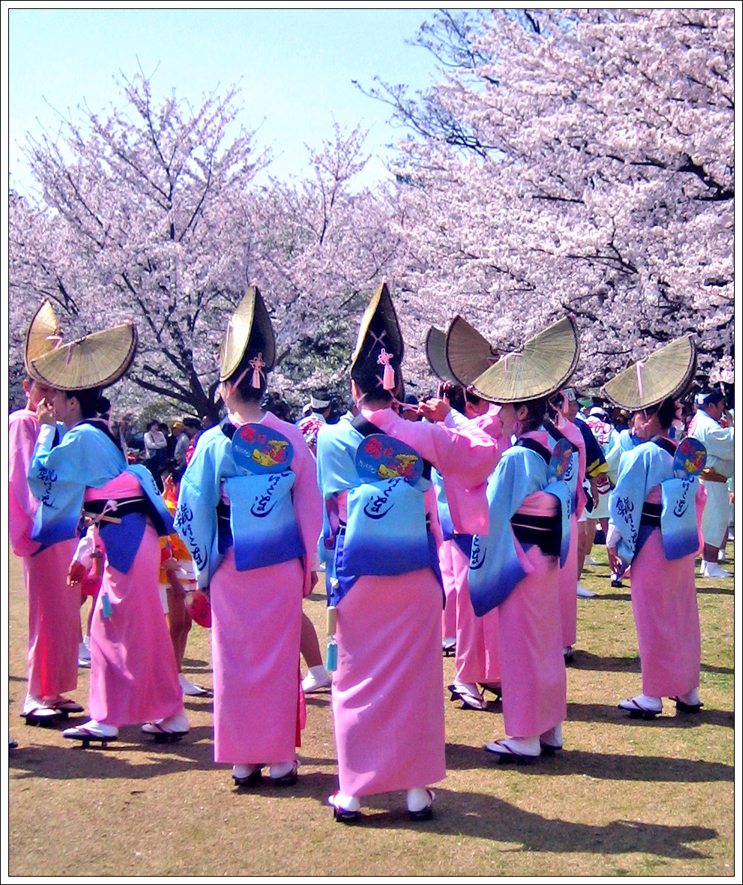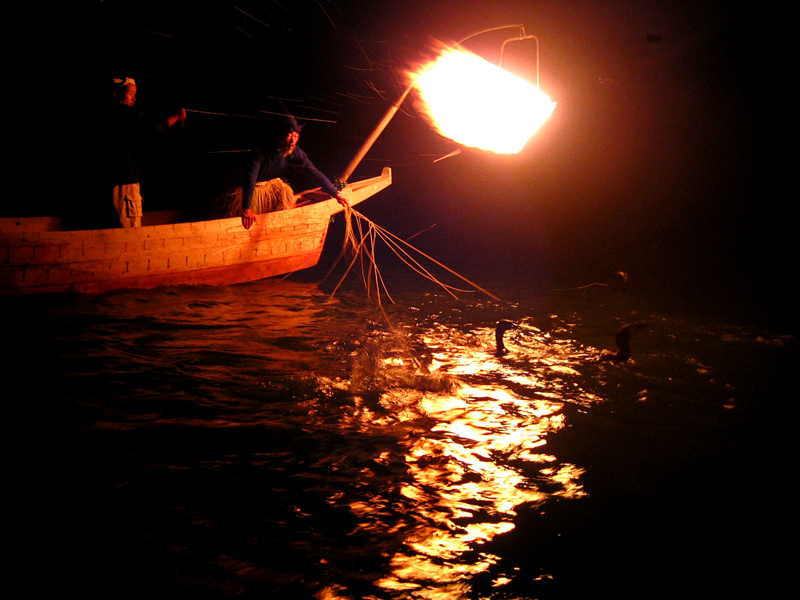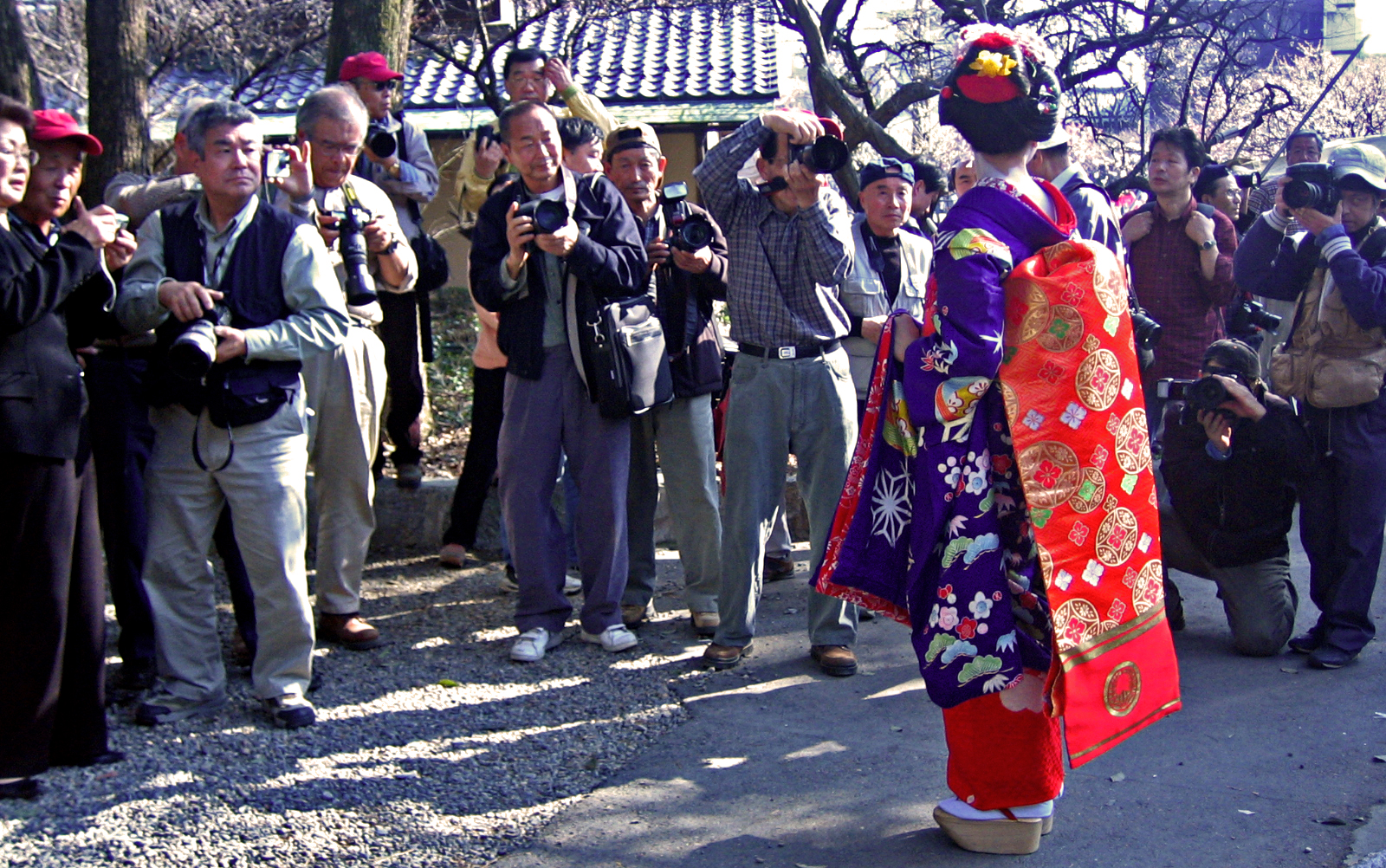I really need to start setting a day aside and seriously start writing this blog.
I can only blame my boss for requiring me to update from the office (which I hardly go to) anymore. If she wants this updated, then I'm going to start doing it from home!
So, here goes another try at updating this regularly!
Today, instead of a review of a website, I'd like to introduce you all to Nagaragawa Garou, or Gallery Naragagawa.
Nagaragawa Garou is an art dealer run by the husband of one of my private students, Mr. Susumu Tsuchiya. The three floor building houses a gallery of traditional and modern Japanese art (Outre) on the first floor, the dealer office on the second floor, and a hanging scroll workshop (Nagaragawa Koubou) on the third floor.
Nagaragawa Garou deals mainly in hanging scrolls, called kakejiku (掛け軸). There is a strong focus on Zen Buddhist calligraphy scrolls, particularly those done by a local Gifu artist named Hisamatsu Shinichi (久松真一), but there is also painted scrolls and oil paintings available for sale.
While their prices do seem relatively cheap compared to other kakejiku dealers, they are still pricey. Scrolls are priced anywhere from $300 up to over $1000. However, the service is great for the price. International shipping is available, and Mr. Tsuchiya is always willing to answer any questions about a particular scroll, the care and conservation of a scroll, and the Japanese art world in general. Many scrolls come with a tomobako (友箱), a wooden box made specifically for the scroll, and with the title of the scroll painted on the lid by the artist. If a scroll does not have a tomobako, Mr. Tsuchiya will include one in the price. You can request a newly-made box, or he can choose an aged one out of his collection of wooden storage boxes. Recently a purchase was made, and Mr. Tsuchiya included a small book containing a collection of works by the same artist for no extra costs. This doesn't happen with all purchases, but he likes to make sure that the purchase is one you will never regret.
I can't really say much about the gallery, Outre. I've only been in it once or twice. It's quite a small area, but there are always interesting works of art on the walls. I'd say about 90% of the works showcased in the gallery are traditional scrolls, but there is always a mix of traditional and contemporary. The gallery is self-serve; there is no one to greet you, no curator waiting to answer your questions. There is a automated recording that welcomes you to the gallery when you walk in, and an intercom up to the Koubou if you should have any questions.
At the Koubou, you can have several things done:
They even use the traditional Japanese measuring system of bu (分), sun (寸), and shaku (尺). One sun is about 33mm/1.3in. Ten bu make up one sun, and ten sun make up one shaku. Most scrolls are about two shaku in length upon completion.
One reason I have been having trouble finding time to update this blog is that I have started helping out at the Koubou in my free time. This past Tuesday I was at the Koubou for a few hours and was able to take some pictures of the process. However, I was unable to get any pictures of the demounting, cleaning/repairing and remounting of scrolls. I hope to get that sometime after the Obon holiday (a post of that later this weekend, I promise). I also just realized I don't have any photos of the actual scroll bars being attached. Next time I'll make sure to get some and put them up!
Anyway, on to the pictures!
 Scrolls waiting to be glued together
Scrolls waiting to be glued together
 The fabric used as a border around the scrolls
The fabric used as a border around the scrolls
 Scrolls getting their fabrics picked out
Scrolls getting their fabrics picked out
 An old Buddhist scroll, at least 100 years old, if not older
An old Buddhist scroll, at least 100 years old, if not older
 Close up of the scroll
Close up of the scroll
 Close up of the fuutai (風帯). We know this scroll is old because the borders and fuutai are all hand-painted
Close up of the fuutai (風帯). We know this scroll is old because the borders and fuutai are all hand-painted
 An old scroll of a Buddhist mandala waiting to be repaired
An old scroll of a Buddhist mandala waiting to be repaired
 Putting glue onto the backing paper
Putting glue onto the backing paper
 Picking up the backing paper on a wooden stick. This is hard to do!
Picking up the backing paper on a wooden stick. This is hard to do!
 Phew! Got it all off the table and onto the stick without ripping!
Phew! Got it all off the table and onto the stick without ripping!
 Putting the paper on the fabric. The same process is used with backing not only the border fabrics, but also a finished scroll.
Putting the paper on the fabric. The same process is used with backing not only the border fabrics, but also a finished scroll.
 Brushing the paper on flat
Brushing the paper on flat
 Once the paper is on, it's back on the stick to transport it to the drying board
Once the paper is on, it's back on the stick to transport it to the drying board
 Affixing the scroll/fabric to the drying board
Affixing the scroll/fabric to the drying board
 What a scroll looks like while drying
What a scroll looks like while drying
 Once a scroll is dried, it's carefully peeled off
Once a scroll is dried, it's carefully peeled off
 Finished scroll! All it needs are the bars, fuutai, and the cord!
Finished scroll! All it needs are the bars, fuutai, and the cord!
 Futai! I made these myself! The two red ones on the left are for Buddhist-style scrolls. The rest are for Japanese-style.
Futai! I made these myself! The two red ones on the left are for Buddhist-style scrolls. The rest are for Japanese-style.
 This fuutai is securely sewed in place!
This fuutai is securely sewed in place!
 Attaching the cord. I get to do this, too.
Attaching the cord. I get to do this, too.
After the scroll is finished, the back of it gets "massaged" to soften up the backing paper. This is done with wax and a beaded cord:
 Wax that looks like marble
Wax that looks like marble
 Beaded cord!
Beaded cord!
 What the back looks like when it's finished.
What the back looks like when it's finished.
After that, it's rolled up, put in it's box, and packed up for shipping!
If you have any interest in owning a traditional Japanese scroll, I completely suggest looking at Nagaragawa Garou. You won't be unsatisfied.
What I'm trying to do currently is convince Mr. Tsuchiya (with the help of his wife) to start selling cheaper scrolls as well. Mr. Tsuchiya goes to several art auctions ever month and ends up with a lot of scrolls that "can't be sold" as they either end up to be prints or unsigned by the artists. Hopefully, one day, we will convince him that there is a market willing to purchase these for decent prices, and he'll stop throwing them out.
I can only blame my boss for requiring me to update from the office (which I hardly go to) anymore. If she wants this updated, then I'm going to start doing it from home!
So, here goes another try at updating this regularly!
Today, instead of a review of a website, I'd like to introduce you all to Nagaragawa Garou, or Gallery Naragagawa.
Nagaragawa Garou is an art dealer run by the husband of one of my private students, Mr. Susumu Tsuchiya. The three floor building houses a gallery of traditional and modern Japanese art (Outre) on the first floor, the dealer office on the second floor, and a hanging scroll workshop (Nagaragawa Koubou) on the third floor.
Nagaragawa Garou deals mainly in hanging scrolls, called kakejiku (掛け軸). There is a strong focus on Zen Buddhist calligraphy scrolls, particularly those done by a local Gifu artist named Hisamatsu Shinichi (久松真一), but there is also painted scrolls and oil paintings available for sale.
While their prices do seem relatively cheap compared to other kakejiku dealers, they are still pricey. Scrolls are priced anywhere from $300 up to over $1000. However, the service is great for the price. International shipping is available, and Mr. Tsuchiya is always willing to answer any questions about a particular scroll, the care and conservation of a scroll, and the Japanese art world in general. Many scrolls come with a tomobako (友箱), a wooden box made specifically for the scroll, and with the title of the scroll painted on the lid by the artist. If a scroll does not have a tomobako, Mr. Tsuchiya will include one in the price. You can request a newly-made box, or he can choose an aged one out of his collection of wooden storage boxes. Recently a purchase was made, and Mr. Tsuchiya included a small book containing a collection of works by the same artist for no extra costs. This doesn't happen with all purchases, but he likes to make sure that the purchase is one you will never regret.
I can't really say much about the gallery, Outre. I've only been in it once or twice. It's quite a small area, but there are always interesting works of art on the walls. I'd say about 90% of the works showcased in the gallery are traditional scrolls, but there is always a mix of traditional and contemporary. The gallery is self-serve; there is no one to greet you, no curator waiting to answer your questions. There is a automated recording that welcomes you to the gallery when you walk in, and an intercom up to the Koubou if you should have any questions.
At the Koubou, you can have several things done:
- Have an old scroll repaired as is
- Have an old scroll demounted (i.e. take off the backing paper and the border fabric), cleaned/repaired, then remounted with the original fabric
- Have an old scroll demounted, cleaned/repaired, then mounted in new fabric
- Have a new work of art/calligraphy mounted onto a scroll
- Have several works of art/calligraphy mounted onto a folding screen (this is a rare one)
They even use the traditional Japanese measuring system of bu (分), sun (寸), and shaku (尺). One sun is about 33mm/1.3in. Ten bu make up one sun, and ten sun make up one shaku. Most scrolls are about two shaku in length upon completion.
One reason I have been having trouble finding time to update this blog is that I have started helping out at the Koubou in my free time. This past Tuesday I was at the Koubou for a few hours and was able to take some pictures of the process. However, I was unable to get any pictures of the demounting, cleaning/repairing and remounting of scrolls. I hope to get that sometime after the Obon holiday (a post of that later this weekend, I promise). I also just realized I don't have any photos of the actual scroll bars being attached. Next time I'll make sure to get some and put them up!
Anyway, on to the pictures!
 Scrolls waiting to be glued together
Scrolls waiting to be glued together The fabric used as a border around the scrolls
The fabric used as a border around the scrolls Scrolls getting their fabrics picked out
Scrolls getting their fabrics picked out An old Buddhist scroll, at least 100 years old, if not older
An old Buddhist scroll, at least 100 years old, if not older Close up of the scroll
Close up of the scroll Close up of the fuutai (風帯). We know this scroll is old because the borders and fuutai are all hand-painted
Close up of the fuutai (風帯). We know this scroll is old because the borders and fuutai are all hand-painted An old scroll of a Buddhist mandala waiting to be repaired
An old scroll of a Buddhist mandala waiting to be repaired Putting glue onto the backing paper
Putting glue onto the backing paper Picking up the backing paper on a wooden stick. This is hard to do!
Picking up the backing paper on a wooden stick. This is hard to do! Phew! Got it all off the table and onto the stick without ripping!
Phew! Got it all off the table and onto the stick without ripping! Putting the paper on the fabric. The same process is used with backing not only the border fabrics, but also a finished scroll.
Putting the paper on the fabric. The same process is used with backing not only the border fabrics, but also a finished scroll. Brushing the paper on flat
Brushing the paper on flat Once the paper is on, it's back on the stick to transport it to the drying board
Once the paper is on, it's back on the stick to transport it to the drying board Affixing the scroll/fabric to the drying board
Affixing the scroll/fabric to the drying board What a scroll looks like while drying
What a scroll looks like while drying Once a scroll is dried, it's carefully peeled off
Once a scroll is dried, it's carefully peeled off Finished scroll! All it needs are the bars, fuutai, and the cord!
Finished scroll! All it needs are the bars, fuutai, and the cord! Futai! I made these myself! The two red ones on the left are for Buddhist-style scrolls. The rest are for Japanese-style.
Futai! I made these myself! The two red ones on the left are for Buddhist-style scrolls. The rest are for Japanese-style. This fuutai is securely sewed in place!
This fuutai is securely sewed in place! Attaching the cord. I get to do this, too.
Attaching the cord. I get to do this, too.After the scroll is finished, the back of it gets "massaged" to soften up the backing paper. This is done with wax and a beaded cord:
 Wax that looks like marble
Wax that looks like marble Beaded cord!
Beaded cord! What the back looks like when it's finished.
What the back looks like when it's finished.After that, it's rolled up, put in it's box, and packed up for shipping!
If you have any interest in owning a traditional Japanese scroll, I completely suggest looking at Nagaragawa Garou. You won't be unsatisfied.
What I'm trying to do currently is convince Mr. Tsuchiya (with the help of his wife) to start selling cheaper scrolls as well. Mr. Tsuchiya goes to several art auctions ever month and ends up with a lot of scrolls that "can't be sold" as they either end up to be prints or unsigned by the artists. Hopefully, one day, we will convince him that there is a market willing to purchase these for decent prices, and he'll stop throwing them out.




















